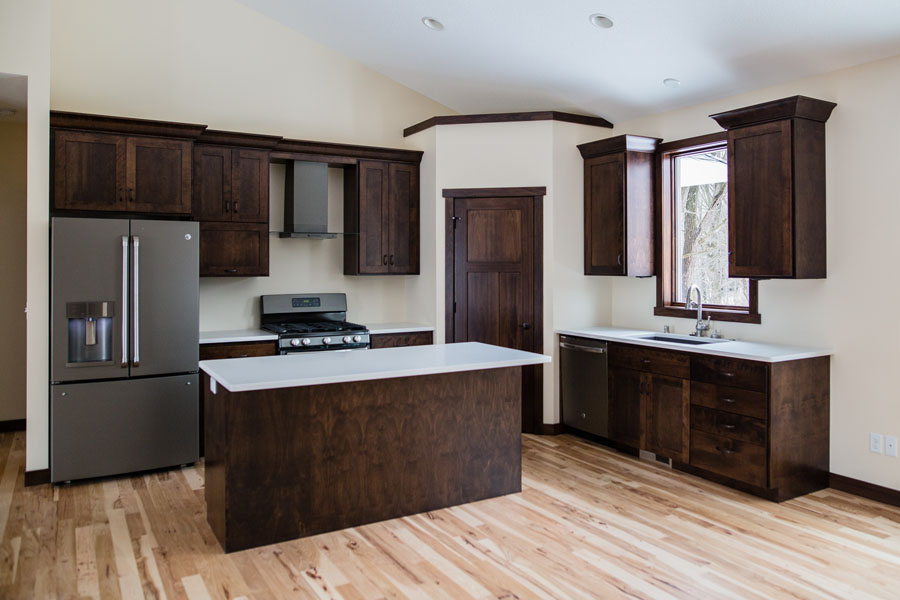Installing broad plank flooring may revitalize a home in a way that few other things can. Hardwood has long been regarded as a classic, and with good cause. It’s exquisite, and if properly cared for, it will survive for decades. Wide planks also give a unique aesthetic that you won’t see in other homes.
However, there are various possibilities within the category of “hardwood flooring.” Whether you choose narrow or broad plank hardwood flooring is one of the most important considerations you’ll have to make.
Wide and Narrow Plank Hardwood Flooring: What’s the Difference?
The distinction between broad and narrow plank flooring may appear clear at first look. Depending on the wood and the manufacturer, broad plank flooring can be as small as 5 inches wide and as large as 12 inches wide. The width of narrow plank floors is usually between 2 and 4 inches.
The changes, however, go beyond the flooring’s width. The two floors offer a room a very different vibe, so think about the appearance you want to achieve before deciding on a flooring design. Below, we’ll go through some of the benefits and drawbacks of each type of flooring.
Wide Plank Hardwood Flooring Benefits
You can’t go wrong with wide plank wood flooring if you want to give a room a traditional or rustic feel. Because wide planks are wider, they display more of the wood’s grain and contain more knots and defects.
Lighter colors of wide plank flooring, in particular, are gaining appeal in contemporary environments. The wide planks and light wood may provide an airy, open sense in large spaces. Wide plank flooring also implies less seams between boards, resulting in fewer interruptions of the wood’s and room’s natural lines.
Wide Plank Hardwood Flooring’s Challenges
Wide plank flooring, on the other hand, isn’t appropriate for every room. The larger flooring in compact rooms can make the environment feel claustrophobic. Although this may be appealing to some, broader boards might increase the probability of knots in the wood, which can detract from a polished appearance.
Furthermore, because the flooring is larger, getting a perfect fit between the boards may be more difficult if you choose a lower-quality product. This, paired with wide plank flooring’s lower humidity tolerance, can cause the floor to cup more quickly. If you reside in an area where humidity levels fluctuate a lot, solid broad plank flooring might not be the ideal option. For your home, you will require high-quality broad plank Engineered floors. Once installed, these Engineered floors will look identical and can be refinished in the future.
Narrow Plank Hardwood Flooring Benefits
Narrow plank flooring is a great option for individuals looking for a cleaner, more contemporary look. It is particularly wonderful in small rooms, as it tends to make the space feel larger than it is. Narrow plank floors are also easier to maintain because there are more boards in the floor.
Narrow plank floors require less area to expand and contract with humidity than wide plank floors. This means they will be less likely to buckle or distort as a result of fluctuations in humidity. Narrow plank flooring or Engineered Plank may be an excellent choice for your home if the humidity in your location fluctuates a lot.
Narrow Plank Hardwood Flooring’s Challenges
Of course, while narrow plank flooring has its merits, it also has some problems. For starters, it lacks the versatility of wide plank flooring. Wide plank flooring can be used in a variety of settings, but thin plank flooring is best used in contemporary settings.
Narrow plank flooring is more expensive than wide plank flooring. Because there are more planks in the floor, it may take longer to install. If you glue and nail your wide plank floors, however, you can save money on installation. Most broad plank flooring companies will insist on using both nails and glue during installation.
Humidity is taken into account.
As previously said, humidity is a crucial consideration when deciding between narrow and wide plank flooring. The ideal relative humidity range for hardwood flooring is 30 to 50 percent relative humidity. However, if you do not have a system in place to avoid it, things may veer out of that range in the winter, when things are drier, and in the summer, when things are more humid.
There are techniques to protect your flooring from the impacts of excessive or insufficient humidity. For starters, ensure sure your interior humidity controls (which are a built-in part of your HVAC system) are functioning properly. Another thing to keep in mind is that the installation procedure will take some time. Prior to installation, make sure your floors have been properly acclimated. This may take a few weeks, but it will be well worth it in the end.
Don’t worry if you live somewhere with high or very changeable humidity and are considering wide plank flooring. Without having to deal with bowing or cupping, you may still have the floors you want. Made in the United States of America Engineered planks are much more dampness resistant.
Flooring: Unfinished vs. Pre-Finished
Another thing to think about when choosing your floors is whether you want them pre-finished or unfinished. It’s a matter of personal preference because both narrow and broad plank flooring are available in both alternatives. Would you rather have complete control over the finishing of your floors on-site, or would you rather save time and money by purchasing pre-finished floors?
Where Can I Get the Best Hardwood Flooring?
Hardwood flooring is a huge financial investment for a home. It has the ability to modify your area more quickly than nearly anything else. Consider what you want the room to look like, and you’ll end up with the floors of your dreams.
Visit Walk on Wood if you’re thinking about installing broad plank hardwood flooring. We’ll create the hardwood floors you’ve always wanted. To get started on a new look for your home, contact us today.


